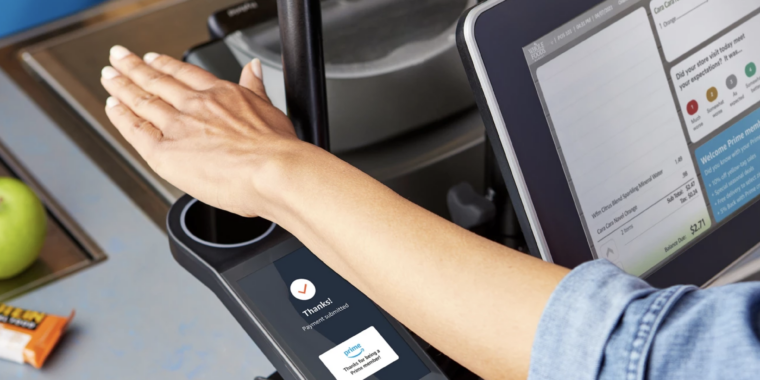Amazon begins large-scale rollout of palm print-based payments - 2 minutes read

Amazon will expand its Amazon One palm print checkout system to dozens of Whole Foods locations, marking the most significant expansion of the technology that was introduced in 2020.
Amazon One allows customers to speedily check out at retail locations using only their palm prints after storing a scan of their hand via an interface at Amazon's kiosks. The palm print data is encrypted and stored on Amazon's servers. And before you worry too much about COVID-19 transmission or future pandemics, Amazon One works when you hover your palm over the scanner—unlike some handprint tech.
Amazon initially added the technology in its Amazon Go stores and the now-shuttered Amazon Books retail locations. It then made its way to several Whole Foods locations in the Seattle area. (Amazon has owned the Whole Foods grocery chain since 2017.)
Time will tell if it will catch on; the benefit for consumers could seem minimal compared to other phone-based contactless payments. Amazon has also explored more radical checkout technologies, like one that allows you to simply grab what you want and leave without visiting a register, provided you have an account with the company.
And the company's storage of customers' palm prints has attracted some criticism and concern.
Amazon One opened to third parties in September, starting with concert venues. But the famed Red Rocks Amphitheater venue outside Denver dropped plans to adopt the tech as artists and privacy advocates launched a campaign called "Amazon Doesn't Rock" to convince venues not to use biometric authentication.
Before that, TechCrunch reported that US senators reached out to Amazon with pointed questions about how the company would use palm print data. Several weeks prior, Amazon launched a program to offer customers a $10 credit to register their palm data in the system.
Source: Ars Technica
Powered by NewsAPI.org